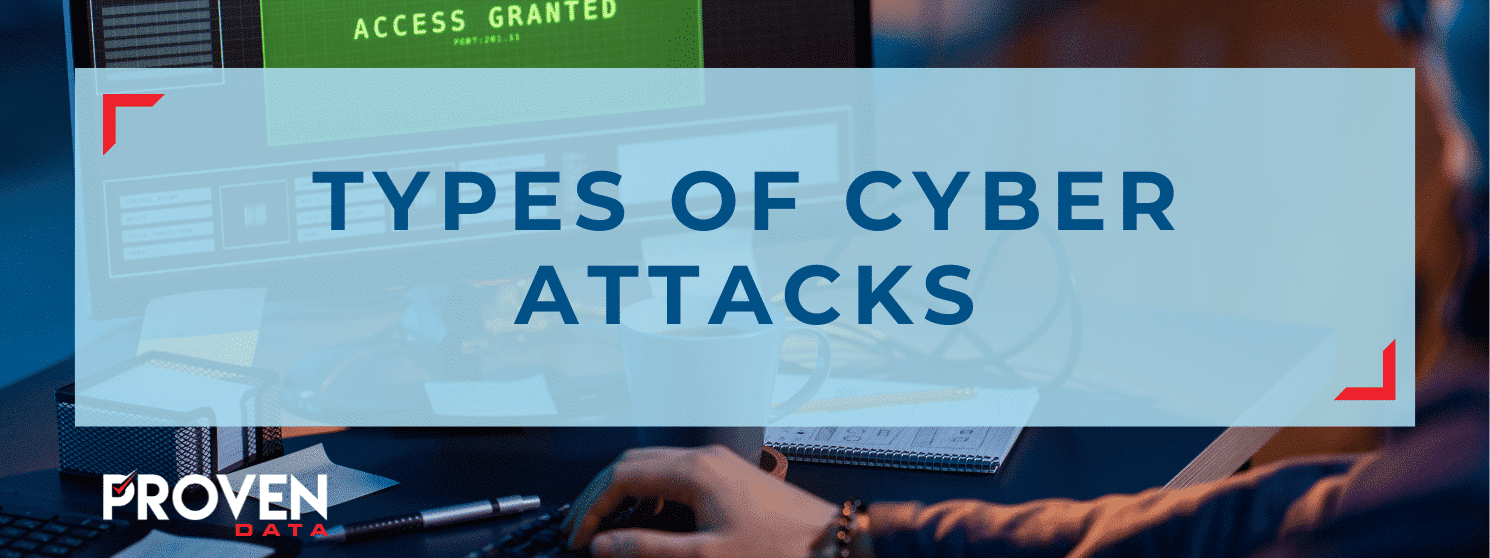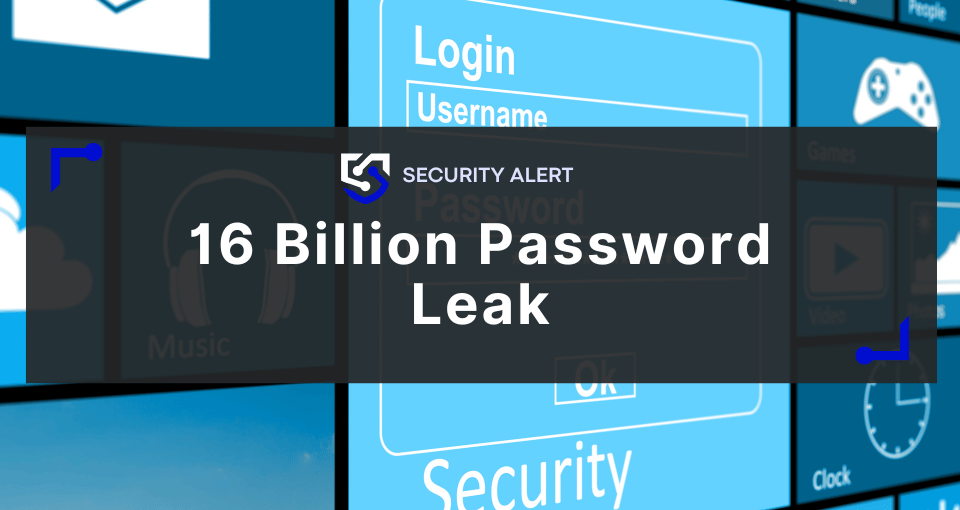In this article, we will see:
- Common types of cyber attacks
- How you can protect your business against these threats
- See how cyber-security incident response services can help you prevent cyberattacks
as well as with ransomware removal and ransomware data recovery
Cyber attacks are becoming more common with the increase of hybrid working models and economic unrest around the world.
With employees spread across the country, if not across the Globe, cybercriminals can gain access to networks, systems, and data as easily as you can grab a cup of coffee. As well as threatening businesses, individuals, and government agencies alike.
Above all, you must protect your business by understanding the different types of cyber-attacks that exist. Then, you can also combat these threats.
What is a cyberattack?
A cyber attack is an attempt to gain unauthorized access to a network, system, or data with malicious intent.
Cybercriminals, also known as hackers and threat actors, may try to steal personal information, block access to files (encryption), and affect your system in several other ways. This includes stealing credit card numbers or passwords, damaging computer systems, disrupting service operations, or even making money by ransoming digital assets or selling stolen data on the deep web.
Types of Cyber Attacks
Types of cyber attacks can range from relatively simple malicious activity carried out by an individual to sophisticated and coordinated attacks organized by large criminal organizations.
They target enterprises and organizations to steal their data, as well as users’ and clients’ data. Then they profit from it, either by requiring a ransom in exchange for the description key (when they lock the files) or by selling that information on the deep or dark web.
The FBI alerts victims of cyber attacks to NOT PAY THE RANSOM as it can finance terrorist groups.
1. Malware Infections
A malware infection is a malicious software that users download unaware. It gets inside a computer without the user’s knowledge or consent. Malware is the most common of cyber attacks and includes ransomware, trojans, and spyware.
Malware enters the system through a vulnerability when users click on malicious links or download infected files.
Each type of malware accounts differently on your system. For example, the trojan virus poses as legitimate software. Ransomware blocks access to files and network key components. And Spyware steals your sensitive and confidential data without your knowledge.
To prevent these malicious programs from damaging the system and can steal personal information you can:
- Keep the operating system (OS) updated
- Use strong and trustworthy security software and antivirus
- Training staff to avoid clicking on suspicious links
- Use a firewall
2. Phishing Scams
Phishing scams use fraudulent emails or websites to trick people into revealing personal information, such as passwords, credit card numbers, usernames, and account numbers. That happens because they pose as a trusted contact or legit business, leading the victim to open the email and click the malicious link.
These attacks are often well-crafted and designed to look legitimate to deceive the target into believing they are interacting with a legitimate company. And then they can gain access to personal information and access the victim’s accounts.
Fortunately, there are ways you can recognize phishing attacks and protect your devices.
- Look for grammar errors as most phishing emails have misspelled words
- Update passwords and never repeat them
- Create a cybersecurity culture in your business
3. Distributed Denial-of-Service (DDoS)
DDoS attacks, also known as Denial-of-Service (DoS), disrupt services or networks by flooding them with fake traffic or requests from multiple computers, often referred to as botnets. These attacks disable websites and restrict access to certain systems.
It can happen organically, as when exclusive news is on a newspaper website or when a very anticipated event starts to sell tickets.
However, when an overflow to a website happens because of a cyber attack, no one can access it. To make it worse, it’s very hard to identify the attackers as the IP addresses come from several locations.
To prevent it from attacking your business website, you can run a traffic analysis to attempt to identify malicious traffic and pay attention to signs such as network slowdowns and intermittent website shutdowns.
4. Ransomware
This is a type of malware, that is, malicious software that takes control of a system. However, ransomware locks files by encrypting them or otherwise restricts access to the data until a ransom is paid. It’s a very common malware and deserves a topic on its own.
This type of attack can cause serious disruption for organizations as every file is locked until the ransom is paid. However, businesses and organizations must not pay the ransom. To regain access to their encrypted files they must hire a ransomware recovery service.
Also, recovering the data after a ransomware attack is a lengthy process, which causes downtime. After a ransomware attack, a company or organization can lose clients, and some can even close their doors.
To prevent ransomware attacks you must create a working environment of cybersecurity awareness, and use antivirus software as well as a firewall.
Proven Data offers a complete service that includes ransomware recovery, removal, file decryption, and more necessary services. Contact our team 24/7 for emergency ransomware data recovery services.
5. Password Attack
A Password attack is a type of cyberattack that attempts to gain access to a system by guessing or brute-force cracking the passwords.
This type of attack can be used to gain access to sensitive information or systems.
To prevent this type of cyber attack you must ensure your company has unique and strong passwords for each account, applying alphanumeric passwords with special characters. Also, setting two-factor authentication can help to protect your business’s sensitive data.
6. SQL Injection Attack
The Structured Query Language (SQL) Injection attack is a type of cyberattack that takes advantage of vulnerable databases. This type of attack can be used to gain access to sensitive data or even control the database itself. The hacker manipulates a standard SQL query, injecting malicious code into a vulnerable website search box. The goal is to make the server reveal crucial information.
This gives the threat actors the possibility to view, edit, and delete tables on your database, as well as grant administrative rights to hackers.
To prevent a SQL injection attack you can apply an intrusion detection system to alert any unauthorized access to your network and use a validation process for the network access.
7. Inside threats
Insider threats can be one of the most dangerous types of cyber attacks as they come from people with access to sensitive information, networks, and systems.
Employees are one possible way to the threat once they have malicious intentions with the company’s data.
However, even careless employees sometimes represent inside threats as they don’t follow security protocols.
Due to negligence or because an employee intended to damage your organization, you must be prepared and take action to prevent insider threats.
For example, you can train your team on cybersecurity best practices. You can also add security protocols to block external individuals from accessing your network and from internal users from sending sensitive data outside the network.
8. Internet of Things (IoT) attacks
IoT attacks target IoT devices and networks. These attacks can be used to take control of devices and are frequently used by hackers to gain access to networks and systems. After the infection, cyber criminals can control the devices and steal data, which they can sell.
Also, IoT attacks are like a gateway for other cyber attacks, such as ransomware, DDoS, and phishing attacks.
To protect your business from IoT attacks and prevent data breaches, you must:
- Use unique and strong passwords
- Keep software updated
- Use Wi-Fi encryption
- Apply multi-factor authentication
9. Zero-day exploit
A zero-day exploit is a type of cyber attack that takes advantage of previously unknown software vulnerabilities. Vendors and developers usually alert users about these vulnerabilities as soon as they learn about them. However, hackers are aware of them as well and exploit those vulnerabilities to access businesses’ and organizations’ systems.
Also, depending on the vulnerability, the vendor can take a time to fix it, allowing cybercriminals to take advantage of it.
This type of attack can be used to gain access to systems, networks, and applications.
The best way to deal with zero-day exploits is by having an incident plan to deal with cyber attacks. This will allow your company to minimize the impact of the attack, and even avoid any loss.
10. Rootkits
Rootkits are malicious programs designed to hide on a system and give hackers backdoor access. They usually are left behind after a previous cyberattack.
This type of attack is especially dangerous, as it gains complete control over a system without detection.
Ransomware removal services can detect rootkits and close these backdoors, preventing further attacks. As well as cyber security services can look for vulnerabilities and increase your business cybersecurity.
11. URL manipulation
URL manipulation is a type of cyber attack that tricks victims into clicking on malicious links by manipulating Uniform Resource Locators (URLs).
This type of attack is often used in phishing scams and can lead to the download of malware or other malicious content.
For this, always check the URL origin and never click on links you’re not familiar with.
12. Cryptojacking
Cryptojacking is a type of attack that uses unauthorized access to an individual’s or organization’s computer resources to mine cryptocurrency. This type of attack can be used to generate revenue and can have serious repercussions for the victim.
This is a very hard-to-detect cyber attack. Cybercriminals use valuable network resources to mine a cryptocurrency, and organizations have no knowledge of it as it happens in the background.
Cybercriminals gain access to a computer through a website, malicious URLs, and even phishing. This means that cyber-attacks happen in multiple ways at once sometimes.
You can prevent cryptojacking by:
- Keep security software updated
- Training employees on cryptojacking awareness
- Using adblocker
13. DNS spoofing
DNS (Domain Name System) spoofing is a type of cyber attack that manipulates the DNS server to redirect traffic to malicious websites or servers.
Cybercriminals use this type of cyberattack to steal data, launch DoS attacks, or distribute malware.
Threat actors bypass traditional security settings. After that, they use the system to transmit data and code within the network.
Here, the best prevention is regular updates, antivirus and anti-malware software, and implementing cybersecurity protocols to find and eliminate vulnerabilities.
14. Cross-site scripting (XSS) attacks
XSS attacks are a type of cyberattack that takes advantage of web applications by injecting malicious code into the website. Cross-site scripting attacks steal passwords and data or spread malware.
Hackers use vulnerable websites to install malicious JavaScript on users’ devices and lead them to fake pages.
You can protect your business from XSS attacks you must:
- Validate all the input data
- Allow only allow listed data
- Encoded all variable output on a page before it returns to the user
How to prevent cyber attacks from happening
To protect businesses from cyber threats, organizations need to invest in cyber-security incident response services that can quickly identify and investigate cyber-attacks. These services provide an organization with the resources it needs to protect its systems from malicious threats and provide ransomware recovery services as well as prevention.
To protect your organization from cyberattacks, you must:
- Invest in cybersecurity training
- Create cybersecurity protocols to find and eliminate vulnerabilities
- Have an incident plan ready
- Use strong and update antivirus and anti-malware software
- Apply two-factor authentication
- Only use strong passwords, and never repeat them
- Regularly back up the data
- Keep software and operating system updated
Proven Data offers ransomware recovery services. But we can also help you prevent all types of cyber attacks with our cybersecurity service.







